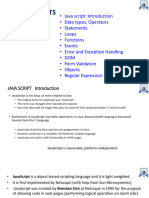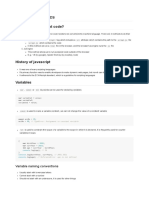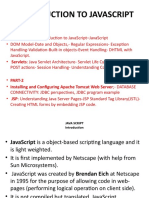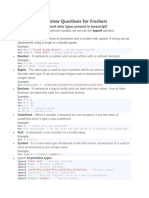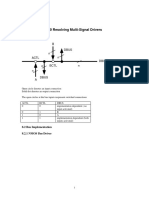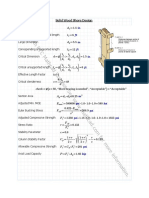0% found this document useful (0 votes)
10 views91 pagesJavascript
JavaScript, created by Brendan Eich in 1995 and standardized as ECMA-262 in 1997, is a dynamic, interpreted language that adds interactivity to web pages. It supports various data types, including strings, numbers, booleans, undefined, null, and NaN, and allows for the creation of functions, objects, and arrays. JavaScript also features concepts like hoisting, variable scope, and event handling, making it essential for modern web development.
Uploaded by
Manish0090Copyright
© © All Rights Reserved
We take content rights seriously. If you suspect this is your content, claim it here.
Available Formats
Download as PPTX, PDF, TXT or read online on Scribd
0% found this document useful (0 votes)
10 views91 pagesJavascript
JavaScript, created by Brendan Eich in 1995 and standardized as ECMA-262 in 1997, is a dynamic, interpreted language that adds interactivity to web pages. It supports various data types, including strings, numbers, booleans, undefined, null, and NaN, and allows for the creation of functions, objects, and arrays. JavaScript also features concepts like hoisting, variable scope, and event handling, making it essential for modern web development.
Uploaded by
Manish0090Copyright
© © All Rights Reserved
We take content rights seriously. If you suspect this is your content, claim it here.
Available Formats
Download as PPTX, PDF, TXT or read online on Scribd
/ 91










